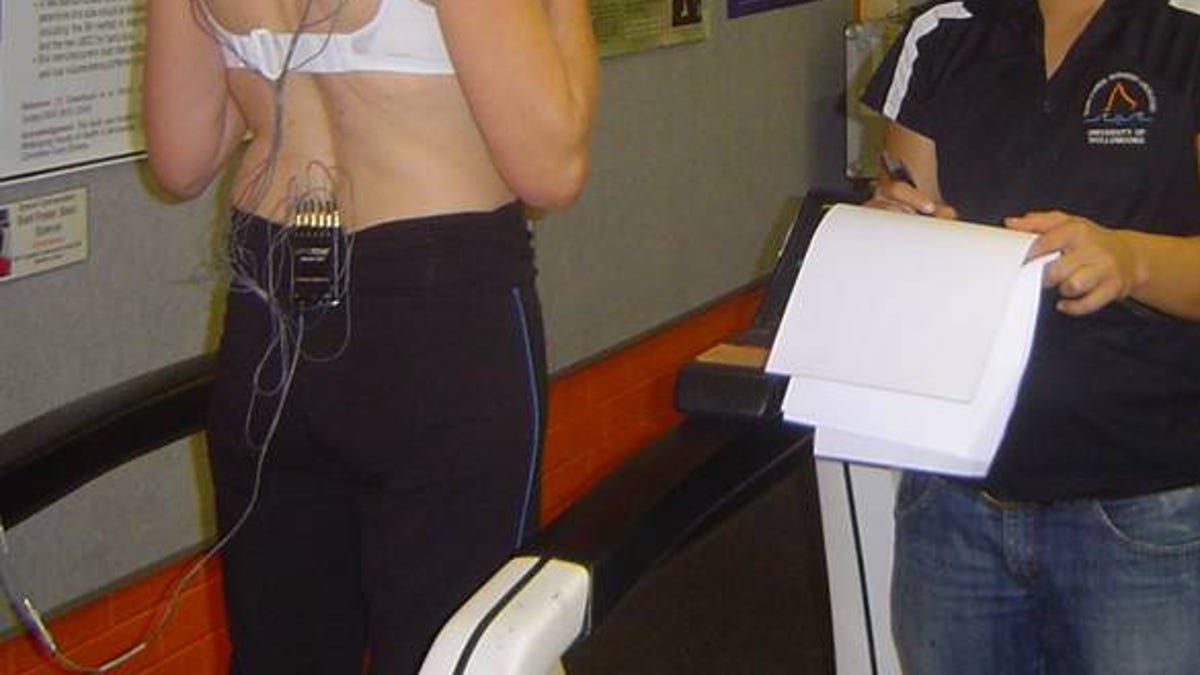'Breast biomechanics' reinventing the sports bra
Researchers in the United Kingdom find that sports bras that both lift and compress large breasts to prevent them from swaying greatly improve comfort during exercise.

Many women of a certain endowment, shall we say, never forget the first time they began to feel their breasts. Not feel, as in touching, but feel, as in noticing the effect they have on a previously my-breasts-don't-impede-this task.
For me, it was the summer before ninth grade, and it was running up and down the stairs of my house. In the span of just a few weeks, I came to the dreaded conclusion that it was now too painful to make the journey from the kitchen to my bedroom without the aid of that suffocating, itchy, terribly untechy invention called the sports bra.
It turns out that my discomfort was a scientifically measurable phenomenon, and that now, at long last, scientists (mostly women) are charting the trajectories of bouncing bosoms to determine the most comfortable bra during exercise.
The study, from the University of Wollongong in Australia and published in July in the journal Medicine & Science in Sports & Exercise, finds that among women with size D breasts or larger, bras that both lift and compress without actual cups tend to rate the most comfortable.
The problem is that this comfiest of bras is a new design--a study prototype, as it were. It does not cup the breasts at all, but rather holds them up by small foam pads tucked into the bras, while at the same time compressing the breasts to reduce not only vertical but also horizontal sway. The researchers based their prototype on the results of an earlier study showing that women were most comfortable exercising without bras while in water, which had a floating effect. According to the report:
Breast kinematic data, bra fit comfort, exercise-induced breast discomfort, and bra rankings in terms of preference to wear during running were compared in 20 women with large breasts who ran on a treadmill under three bra conditions: an experimental bra that incorporated both breast compression and elevation, an encapsulation sports bra, and a placebo bra. Exercise-induced breast discomfort (P < 0.01) and bra discomfort (P < 0.01) were significantly less for the experimental bra condition relative to the sports bra and placebo bra. This reduction in discomfort was achieved through greater breast elevation (P < 0.01) and compression, with no difference found in vertical breast displacement (P = 0.12) or vertical breast velocity (P = 0.06).
Of course, said bra does not yet exist outside of this scientific study.
So in the meantime, Jenny White, who studies breast biomechanics at the University of Portsmouth in the United Kingdom, which once produced a report entitled, Bouncing Breasts: A Credible Area of Scientific Research, recently told The New York Times that it's best to find a bra that "feels supportive," and that, as obvious as that sounds, the typical bra marketed as a sports bra is "just a fashionable crop top that has very stretchy material and that would not provide a lot of support."
White's own research has been groundbreaking, as she has studied the impact that swaying breasts have on a woman's form as she runs. The more sway, the heavier the footstep, and the bras that best reduce sway (encapsulation bras) are also rated the least comfortable.
White goes on to suggest that the best way to test the comfort and function of a sports bra is to jump "up and down in the changing room and assess how much movement occurs."
One might conclude that said activity is best done in the presence of one's partner, who is, presumably, of the supportive variety as well. And if discomfort ensues, let's hope that the University of Wollongong prototype makes it to market soon. For the sake of well-endowed women everywhere, it's time to modernize the sports bra.

